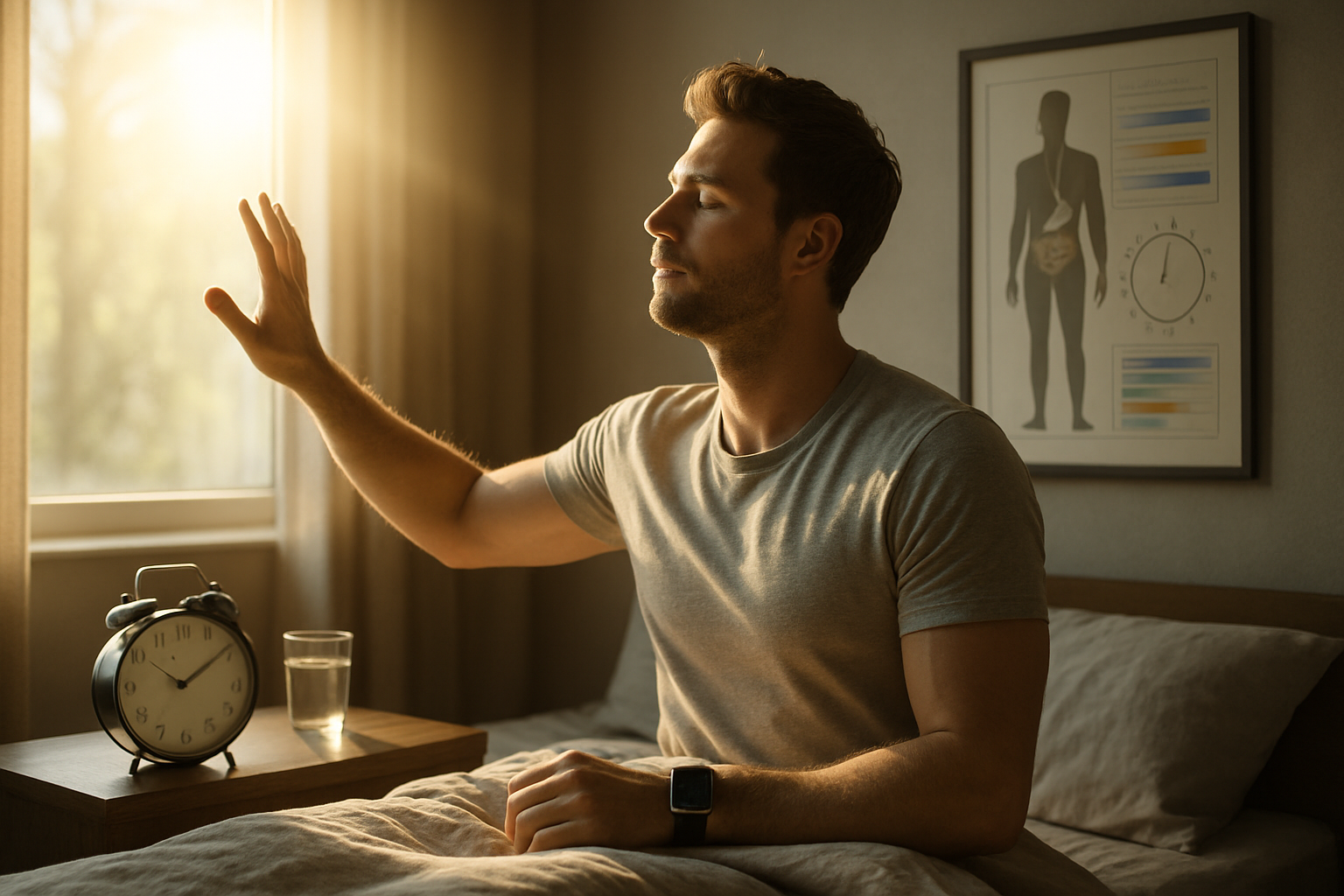Biohacking Your Circadian Rhythm: The Science of Light Exposure
Imagine waking up each morning feeling refreshed, energized, and ready to tackle the day. Now, picture maintaining that vitality throughout your waking hours, followed by effortlessly drifting into a deep, restorative sleep at night. This isn't a far-fetched dream—it's the potential reality of optimizing your circadian rhythm through strategic light exposure. But how exactly does light influence our internal clocks, and can we truly hack our biology for better health?

The discovery of intrinsically photosensitive retinal ganglion cells (ipRGCs) in the early 2000s revolutionized our understanding of how light affects the body. These specialized neurons in our eyes are particularly sensitive to blue light, sending signals directly to the suprachiasmatic nucleus (SCN)—our brain’s master clock. This revelation opened up new possibilities for manipulating our internal timekeepers through controlled light exposure.
The Spectrum of Influence: How Different Lights Affect Us
Not all light is created equal when it comes to circadian influence. Blue light, with its short wavelength and high energy, has the most potent effect on suppressing melatonin production and increasing alertness. This is why exposure to blue light from screens in the evening can disrupt sleep patterns.
On the other hand, red and amber lights have minimal impact on circadian rhythms, making them ideal for evening use. Green light falls somewhere in the middle, offering potential benefits for certain cognitive functions without significantly disrupting sleep cycles.
Recent studies have also explored the effects of dynamic lighting systems that mimic natural daylight patterns. These systems adjust color temperature and intensity throughout the day, potentially improving mood, productivity, and sleep quality in office and home environments.
Timing is Everything: The When and How of Light Exposure
The timing of light exposure is crucial for maintaining a healthy circadian rhythm. Morning light exposure, particularly within the first hour of waking, helps to reset our internal clocks and promote alertness. This can be achieved through natural sunlight or light therapy devices that simulate daylight.
Conversely, reducing blue light exposure in the evening is essential for allowing natural melatonin production to occur. This doesn’t mean living in darkness after sunset, but rather being strategic about light sources. Using warm, dim lighting and blue light filtering technologies on devices can help maintain circadian alignment.
Interestingly, brief exposure to bright light during the day, even for just a few minutes, can have significant benefits. This finding has led to the development of “light snacking” protocols, where individuals take short breaks to expose themselves to bright light, potentially boosting mood and cognitive performance.
Beyond Sleep: The Far-Reaching Effects of Circadian Optimization
While improved sleep is often the primary goal of circadian rhythm optimization, the benefits extend far beyond nighttime rest. Research has shown that proper circadian alignment can influence metabolic health, immune function, and even cancer risk.
A study published in the journal Cell found that disruption of circadian rhythms could accelerate tumor growth in mice, highlighting the potential importance of circadian health in cancer prevention and treatment. Additionally, emerging research suggests that timing medical treatments to align with an individual’s circadian rhythm—a practice known as chronotherapy—may enhance efficacy and reduce side effects.
The Future of Light: Innovations in Circadian Health
As our understanding of circadian biology deepens, innovative technologies are emerging to help individuals optimize their light exposure. Wearable devices that track light intake and provide personalized recommendations are becoming increasingly sophisticated. Some even offer gentle vibrations or visual cues to remind users to seek out or avoid certain types of light at specific times.
Architectural design is also embracing circadian principles, with buildings incorporating dynamic lighting systems and materials that can adjust their light-transmitting properties based on the time of day. These “circadian-friendly” spaces aim to create environments that support natural biological rhythms, potentially improving occupant health and well-being.
Illuminating Facts: Shedding Light on Circadian Health
-
Exposure to morning sunlight for just 30-60 minutes can improve nighttime sleep quality by up to 75%
-
Blue light exposure at night can delay melatonin release by up to 3 hours
-
Our eyes process light differently for circadian functions than for vision, which is why some blind individuals can still maintain normal sleep-wake cycles
-
The human circadian rhythm is slightly longer than 24 hours for most people, typically closer to 24.2 hours
-
Eating patterns can influence circadian rhythms, with late-night meals potentially disrupting sleep and metabolic processes
As we continue to unravel the complex relationship between light and our biology, the potential for improving health through circadian optimization becomes increasingly clear. By understanding and respecting our internal clocks, we can harness the power of light to enhance not just our sleep, but our overall well-being. The future of health may very well be illuminated by the strategic use of light, guiding us towards more balanced, energized, and healthful lives.





